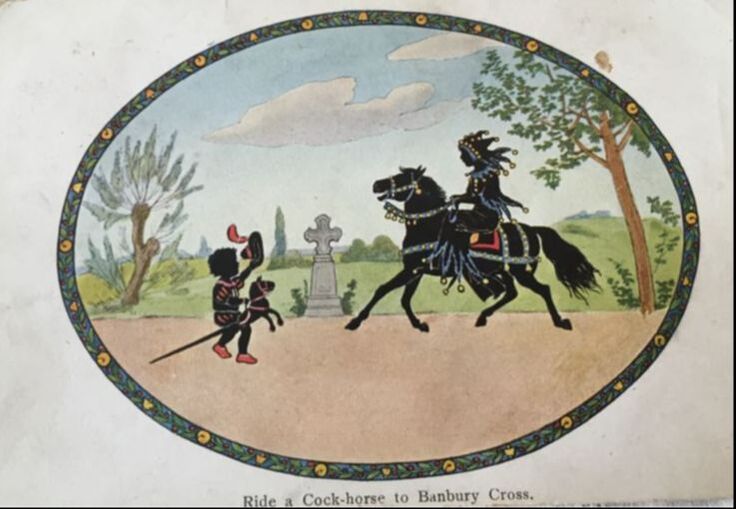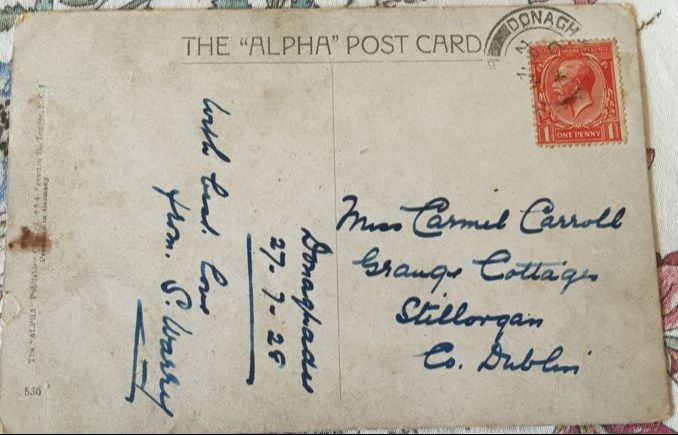Stillorgan Parochial School
It is not clear when the school first opened, but in April 1787 an advert was placed in Saunder’s
Newsletter that a parish clerk/school master was required at Stillorgan. Applicants were to apply to
the church on Good Friday, Easter Sunday or Monday with their references. The Rev Edward Beatty
was the incumbent at this time. In September that year, a charity sermon raised over 52L for the
school, and the acknowledgment of the funds by the Governors notes that the school is only lately
instituted in the parish and teaches reading, writing and arithmatick, together with some useful
manufacturing skills; their hope was to also clothe the most indigent of the children. By 1789
there were 74 children being taught at the school. 18 girls had learned how to sew and knit and
the neediest were clothed and given breakfast in winter.
By 1804, charity sermons were being held twice a year towards the upkeep of the school which had
over 50 children of both sexes, and of all denominations who were being taught to read and write
and given instruction in works of industry. In 1809, the treasurer James Williams of Kilmacud House
acknowledged over 10L in donations from various local people and the Vestry Clerk, Thomas Cooper
acknowledged a further 6L after a sermon by the Rev Dionysius Dowling. The school had a board of
Governors and Governess who met frequently and the school was called Stillorgan Charity School. In
1811 the schools were educating 130 children and ran a school on Sundays for 50 children who
worked weekdays. A charity sermon for the school was an annual event and a second charity sermon
was in place to raise funds for the Poor Shop Repository at Newtown Park which had been founded in
1802 to help the poor by offering employment in spinning and a weekly allowance for workers in
times of sickness. It also provided, clothes, fuel in winter and medicine. By 1817 the poor shop also
provided asylum to lying-in woman and widows and was based in The Glebe on Newtown Park. The
Poor Shop and asylum were still in existence some 30 years later.
In 1813, the Rev John Reade, curate of Stillorgan was seeking a married couple to act as Schoolmaster
and Mistress to conduct a school in Stillorgan. The couple were to be from the Established Church,
sober, moral, to be capable and to have good tempers. The school was to be run on the Lancaster
Plan. This method was also known as "mutual instruction" or the "Bell Lancaster method" after the
British educators Andrew Bell and Joseph Lancaster who both independently developed it. The method
was based on the abler pupils being used as 'helpers' to the teacher, passing on the information they
had learned to other students. This system was seen by many as very cost effective, which would allow
the poor to be educated at a minimal cost.
Where the original schools were is not clear, perhaps one close to the Parochial house on what is now
Newtownpark Avenue where a school house is noted on the OSI 1837-1842 map but we know that by
1817 there were three schools, one for boys in Stillorgan village, one for girls in Stillorgan village and
another for girls in Newtownpark Village. They were in debt to the amount of 50L having repaired the
old school and added a new. By 1824 one hundred and eighty children were being educated.
However, by 1835 we know that the schools were based beside the church. ‘At the entrance into this
churchyard are poor schools. One for the boys, at which about forty-five are educated, another for girls
attended by thirty-five, there is likewise an infant school attached. They are all supported by private
contribution and sermons at the church.’ John D’Alton, History of Dublin, 1836.
In 1862 the male and female school were separated implying that sometime in the intervening years they
had been amalgamated. A school mistress was appointed and the girls school opened in 1863. In 1872
the infant school was subsumed into the girl’s school due to a lack of a teacher and lack of funds. In 1883
Jonathan Cole took over as schoolmaster from John Sides who had been schoolmaster for the previous
12 years. Jonathan died a bachelor aged 23 at Stillorgan on the 28 Jun 1884 from encephalitis, his sister
Margaret Anna Cole from Ballyfin, Mountrath the informant. He was buried at Ballyfin.
From 1898 to 1906 Miss Selina Colvin was the School Mistress living at the school lodge, and from 1906
to 1912, Thomas Roney was the Schoolmaster but lived off site. Louisa Goodey was the monitress during
this period.
Mrs Sarah Warry started working as Principal of Stillorgan on 2 Sep 1912 and stayed for 23 Years. She
and her husband lived at School Buildings, Stillorgan. She was earning £56 per annum in 1927 and
retired in 1935. Mildred Hodgins was principal next but only remained 18 months leaving to get married in
1938. Her replacement was Ellen Fitch later to be Mrs McQueston) and she remained thirty years until
her retirement in 1968.
In 1927 the school was brought under the National School Scheme, re-named St Brigid’s National School
and is still running, albeit on another site on the grounds, as a National School today.
© June Bow & Karen Poff – October 2021
It is not clear when the school first opened, but in April 1787 an advert was placed in Saunder’s
Newsletter that a parish clerk/school master was required at Stillorgan. Applicants were to apply to
the church on Good Friday, Easter Sunday or Monday with their references. The Rev Edward Beatty
was the incumbent at this time. In September that year, a charity sermon raised over 52L for the
school, and the acknowledgment of the funds by the Governors notes that the school is only lately
instituted in the parish and teaches reading, writing and arithmatick, together with some useful
manufacturing skills; their hope was to also clothe the most indigent of the children. By 1789
there were 74 children being taught at the school. 18 girls had learned how to sew and knit and
the neediest were clothed and given breakfast in winter.
By 1804, charity sermons were being held twice a year towards the upkeep of the school which had
over 50 children of both sexes, and of all denominations who were being taught to read and write
and given instruction in works of industry. In 1809, the treasurer James Williams of Kilmacud House
acknowledged over 10L in donations from various local people and the Vestry Clerk, Thomas Cooper
acknowledged a further 6L after a sermon by the Rev Dionysius Dowling. The school had a board of
Governors and Governess who met frequently and the school was called Stillorgan Charity School. In
1811 the schools were educating 130 children and ran a school on Sundays for 50 children who
worked weekdays. A charity sermon for the school was an annual event and a second charity sermon
was in place to raise funds for the Poor Shop Repository at Newtown Park which had been founded in
1802 to help the poor by offering employment in spinning and a weekly allowance for workers in
times of sickness. It also provided, clothes, fuel in winter and medicine. By 1817 the poor shop also
provided asylum to lying-in woman and widows and was based in The Glebe on Newtown Park. The
Poor Shop and asylum were still in existence some 30 years later.
In 1813, the Rev John Reade, curate of Stillorgan was seeking a married couple to act as Schoolmaster
and Mistress to conduct a school in Stillorgan. The couple were to be from the Established Church,
sober, moral, to be capable and to have good tempers. The school was to be run on the Lancaster
Plan. This method was also known as "mutual instruction" or the "Bell Lancaster method" after the
British educators Andrew Bell and Joseph Lancaster who both independently developed it. The method
was based on the abler pupils being used as 'helpers' to the teacher, passing on the information they
had learned to other students. This system was seen by many as very cost effective, which would allow
the poor to be educated at a minimal cost.
Where the original schools were is not clear, perhaps one close to the Parochial house on what is now
Newtownpark Avenue where a school house is noted on the OSI 1837-1842 map but we know that by
1817 there were three schools, one for boys in Stillorgan village, one for girls in Stillorgan village and
another for girls in Newtownpark Village. They were in debt to the amount of 50L having repaired the
old school and added a new. By 1824 one hundred and eighty children were being educated.
However, by 1835 we know that the schools were based beside the church. ‘At the entrance into this
churchyard are poor schools. One for the boys, at which about forty-five are educated, another for girls
attended by thirty-five, there is likewise an infant school attached. They are all supported by private
contribution and sermons at the church.’ John D’Alton, History of Dublin, 1836.
In 1862 the male and female school were separated implying that sometime in the intervening years they
had been amalgamated. A school mistress was appointed and the girls school opened in 1863. In 1872
the infant school was subsumed into the girl’s school due to a lack of a teacher and lack of funds. In 1883
Jonathan Cole took over as schoolmaster from John Sides who had been schoolmaster for the previous
12 years. Jonathan died a bachelor aged 23 at Stillorgan on the 28 Jun 1884 from encephalitis, his sister
Margaret Anna Cole from Ballyfin, Mountrath the informant. He was buried at Ballyfin.
From 1898 to 1906 Miss Selina Colvin was the School Mistress living at the school lodge, and from 1906
to 1912, Thomas Roney was the Schoolmaster but lived off site. Louisa Goodey was the monitress during
this period.
Mrs Sarah Warry started working as Principal of Stillorgan on 2 Sep 1912 and stayed for 23 Years. She
and her husband lived at School Buildings, Stillorgan. She was earning £56 per annum in 1927 and
retired in 1935. Mildred Hodgins was principal next but only remained 18 months leaving to get married in
1938. Her replacement was Ellen Fitch later to be Mrs McQueston) and she remained thirty years until
her retirement in 1968.
In 1927 the school was brought under the National School Scheme, re-named St Brigid’s National School
and is still running, albeit on another site on the grounds, as a National School today.
© June Bow & Karen Poff – October 2021

